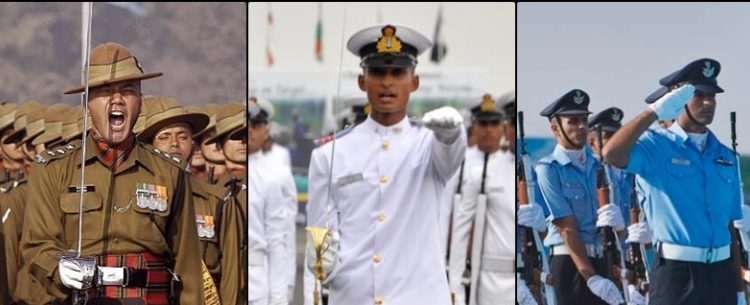The long turf war between Indian Armed Forces once again come to fore with General Bipin Rawat, Chief of Defence Staff’s (CDS) remarks that the Indian Air Force (IAF) is required to provide air support to ground forces. According to him, IAF continues to remain a supporting arm just as artillery or engineers support the combatant arm in the Army. Inter services rivalries for shares in the defense budget and role are a common phenomenon the world over, but they neither come in public domain nor does any commander trivialize other sister services by unprofessional remarks. Rivalries in the Indian Armed Forces have been part of public knowledge for a long time, however, Gen Rawat’s remarks expose his lack of understanding and ignorance about the role of air power in modern warfare and contempt for a service smaller in size, though with great operational potential. His remarks only further strengthen negative public opinion about his professional incompetence with the Indian Army’s performance at Galwan after his three-year command.
Indian Army has always endeavoured to put IAF in a secondary role. Formal appointment of a former Army Chief as the Chief of Defence Staff gives further incentive to the Indian Army to look down upon other services, especially the IAF.
The Indian Armed Forces, in addition to squabbling for funds and role, are also notorious for antagonism during actual operations. Armed helicopters became a contentious issue during the Kargil conflict in 1999 between the Indian Army and IAF. Later in 2012, the two services again clashed on the issue of AH-64D Apache helicopters. The then-IAF Chief had to vehemently fight for both, ownership and operational control of the helicopters.
During the entire post-independence period, Indian war doctrine remained land-centric, giving little importance to joint thinking process. Without joint planning, the three services performed poorly in the 1962 and 1965 wars with China and Pakistan. Initially, the Indian Armed Forces heavily relied on Russian military hardware and training system. However, after the collapse of Soviet Union, India started acquiring Western military hardware and was thus forced to adapt to Western concepts.
US dependence on India as a counter-weight to rising China boosted the entire process. Viewing herself as a rising regional power with global aspirations, and using US support as an opportunity, India embarked upon ambitious plans for strengthening her military capability. While overtly India used a two-front war scenario for the acquisitions, its real aim was to become a regional hegemon, subdue neighbours and power projection beyond her borders with strategic reach.
Overt nuclearisation of South Asia, the Kargil conflict, 9/11 and newfound aspirations in the changing global order, led Indian military leadership to revisit military strategy with increasing role for the IAF. However, the Indian Army continued to occupy the central role. While its infamous Cold Start Doctrine (CSD) relies heavily on air support for all its Independent Battle Groups (IBGs), it however, envisages penny-packet utilization of IAF, contrary to the universally accepted concept of air power employment. Despite the changing military employment environment, Indian Army did not accept IAF’s lead role in military strategy.
With the envisaged role of a rising power, India started ambitious procurement plans for force modernization. To meet the requirements, IAF in 2005 announced procurement of 126 Multi-Role Combat Aircraft (MMRCA). At the same time, the Indian Army put up a demand for raising a dubious Strike Corps for mountain operations, without considering integration of IAF in its plans. While it successfully manoeuvred to get the funding for the new corps, IAF could not procure the aircraft due inter services rivalries and bureaucratic hurdles.
After the 27thFebruary, 2019 embarrassment, IAF modernization plans once again gained traction and a deal was signed for acquisition of 36 Rafale fighter jets from France. The deal has now come under allegations of corruption, effectively halting any major procurement by the IAF in near future. Many opine that some of the Indian Army generals have been instrumental in raising the issue to embarrass IAF and dissuade national leadership from giving it preferential treatment.
While inter services disputes for resources continue, the Indian CDS seems either incapable of comprehending the strategic significance of air power in the modern military system or he is simply endeavouring to put IAF down to maintain Army’s supremacy. His statement is a testament to his inability to understand the peculiar strengths, weaknesses and requirements of each service. It seems, he rose to be the Indian Army Chief and then the first CDS given his personal loyalties to Indian Prime Minister Modi and not for his professional competence.
As if the high number of corruption cases, suicides and immorality were not enough to discredit Indian Armed Forces, the rivalries, low level of joint-ness in the Indian military system and appointment of an incompetent person to head the top slot raises more questions about the professional competence of the Indian military system. While such a situation suits regional countries especially Pakistan, it is difficult to fathom how the US is hedging all its hopes on India and its military in its China containment policy.
The author is a retired Air Marshal of the PAF who served as Pakistan’s Air Adviser at New Delhi from 2002-2006, presently working as Director Strategic Defence and Security at Centre for Aerospace & Security Studies. This article was first published in The Nation. He can be reached at ashfaquearain58@yahoo.com




